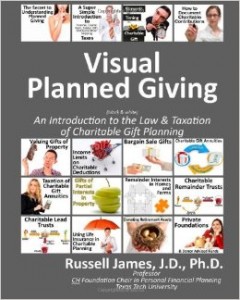I have the opportunity to speak with people of all ages, professions, and interests each year about their estate and philanthropic planning. I usually begin by asking them questions about themselves and their family. If the client is retired, I’ll ask what they did when they were working, how many children they have, and so on.
To simply ask how to divide their possessions, or to give directly to charity, invites problems. They will most likely answer: “I would like to leave everything to my children equally after we’re gone.”
Once I was having an interesting conversation with new clients, spending time asking them questions about their history, children and grandchildren. The husband stopped me to ask why was I spending so much time trying to learn about his family members.
I said to him, if I don’t know this information how can I create a philanthropic plan that’s going to work for you and your children?
Let me give you an example. Suppose Johnson has built a family business over the course of many years. The equity and value in the family business makes up a large chunk of Johnson’s family net worth. Let’s assume Johnson has three children, only one who works in the business. Johnson tells me that there is some acrimony between the son who works in the business and another son who does not.
If Johnson simply divides his net worth among the three children, what problems might occur? What is the likelihood of Johnson ever making a current donation or a charitable bequest?
In working an estate with a current donation and/or estate bequest, an appropriate solution can only be found if everyone is willing to have difficult conversations and potentially, disagreements. It’s okay to have disagreements during the planning stage. What every family doesn’t want is to have disagreements once it’s too late.
Please contact me to discuss how to initiate these discussions with your family, develop a healthy relationship, and leave a legacy that everyone will be pleased with.
William Petruck
President and CEO
FUNDING matters Inc.
Toll free: 1-800-856-1354
www.fundingmatters.com
www.giftabulator.com
ca.linkedin.com/company/fundingmattersinc
www.linkedin.com/in/williampetruck
twitter.com/funding_matters
http://Facebook.com/FUNDINGmattersinc
https://www.theglobeandmail.com/investing/globe-wealth/article-family-meetings-emerging-as-a-new-facet-of-financial-planning/




